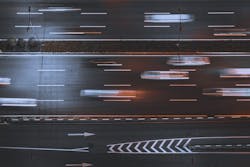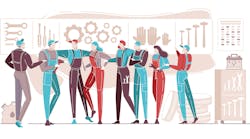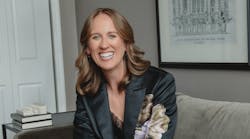Kelly Funkhouser, program manager for vehicle interface and head of connected and automated vehicles at Consumer Reports says trying to talk about advanced driver assistance systems across multiple automakers is nearly impossible at its current state.
Due to the ongoing confusion when it comes to naming conventions in the ADAS realm, Partners for Automated Vehicle Education hosted a webinar that not only pointed out the lack of uniformity in naming conventions, but offered the industry’s first stepping stone for standardization.
Let’s say we’re making brownies, Funkhouser poses.
“You have your own recipe to make brownies and I have my own recipe. Mine might be different than yours, but eggs are eggs and sugar is sugar and there is no confusion on either end about this.”
When talking about ADAS, it is not nearly that simple because each OE has its own naming convention. What Funkhouser found is that even when technicians were using the same terminology, they meant two different things.
When it comes to baking brownies, even if the recipes differ, the final product is still the same—freshly baked brownies.
By standardizing the lexicon surrounding ADAS, the hope is that even though repairs may be done in a variety of ways, the final product is still the same: an accurately fixed vehicle.
Greg Brannon, AAA’s Director of Automotive Engineering and Industry Relations, says cruise control has 20 different names across the industry, despite being around since 1948.
“It is very easy for consumers to get confused, especially in higher levels of automation,” Brannon says.
It is precisely this lack of communication that could result in an ineffective, and potentially dangerous adjustment of your car’s ADAS capabilities. For the consumer, it is not only about being able to identify various parts of their vehicle, but also knowing how they should be functioning on a regular basis.
Kelly Nantel, vice president, communications and advocacy for the National Safety Council says, “Uniform speech is the first step in helping the consumer understand how the technology works so they know how they can best use it.”
Brannon fears that car owners are unaware of the scope of features their vehicles have, let alone how to identify them.
“We cannot have these conversations if we don’t even know what we are talking about,” he laments. “If we cannot decide what to call these individualized systems, how do we ever work on them beyond that?”
Nantel says this is precisely the question that is driving the innovation.
“First we have to create a common narrative, then we can dive into how they are supposed to perform,” Nantel says. But creating a common narrative is easier said than done when working across a plethora of vendors, parts manufacturers, and automakers.
Unifying the Narrative
The first step is to normalize the diction, says Funkhouser.
“We want to describe these systems in a convenient way so that the customer can adopt it into their own vernacular and feel comfortable using it,” she says.
The hope is that as individual consumers begin adopting the narrative, more will follow.
Brannon also emphasizes the importance of adopting the terminology throughout your entire company. He says the power of individual organizations talking with the media and the industry in general, gets the ball rolling towards uniformization.
As of now, there is only a preliminary list of industry-wide terms but it could not have come sooner. Given today’s technological capabilities coupled with the rapidly-evolving industry, Funkhouser says there is no time to waste.
“Everything is moving so quickly and we do not have the luxury to wait for everyone to catch up, we all have to get on the same page as early as possible while we are developing the technology,” she says.
The Right Space
For Mark Kipfer, co-owner of Auto Glass Express in Berkeley, Calif., setting up a space for cars with ADAS repairs, involves essentially building a virtual box around the vehicle.
He has an interface with the vehicle's computer and a pad that has the software on it. When the operator runs through the system, it will inform him or her, how to place the targets and which targets are required, including the sequence of where to place those targets. Once the vehicle sees the targets, it can calibrate the camera.
In the designated shop space, the vehicle has to be level, the frame has to be on square with the vehicle and the targets need to be placed correctly.So, there's no physical adjustment of the camera but there is physical adjustment of the camera.
For Jacques Navant, technical director for Don's Mobile Glass and The Calibration Station in Modesto, Calif., the process involves a tightly controlled environment. One example is a controlled light source, which includes an enclosed, open work area without natural light so the technician has complete control of every aspect of the light source.
"You have to have a controlled light source, direct sunlight or refractions from other surfaces can give you the false impression of a job done complete and accurate, or a failed calibration," Navant says. "If your light source is distorting the target that your camera is trying to pick up and calibrate to then you're not doing a true, accurate calibration."
He says the layout for these has to be a large, open area. For shops performing repairs on more American vehicles, they might need a bigger area because they require larger sized targets to complete the calibration.
Breaking down what you need for your space:
Designate one stall or bay for only calibrations.
Set up off-white curtains around the bay that can be pulled across the whole area so that nothing visually can confuse the camera.
Make sure you have a designated space that is at least about 30 feet deep and 15 feet wide.
Have a controlled light source.
The space needs to have blank walls and blank floors with no distinct lines or patterns.





